

Definition
1. Resistance Temperature Characteristic
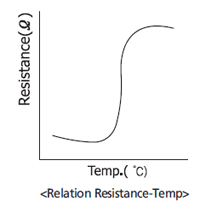 |
Resistance temperature characteristic of PTC Thermistor shows that logarithm of resistance is proportional to temperature. Some abruptly increase the resistance at the gradient of 15 to 60%/℃ when reaching the abruptresistance change temperature, while others indicate relatively gradual resistance temperature gradient. Resistance rises abruptly from a certain temperature. The abrupt resistance change temperature ranges from 30 to 320℃. |
2. Voltage-Current Characteristic (static characteristic)
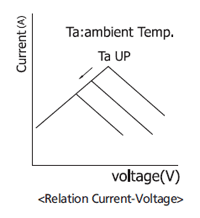 |
1. PTC Thermistor shows a self-heating function when voltage is applied. When operating point exceeds the maximum current point, the current becomes constant and PTC Thermistor itself automatically regulates temperature. This provides PTC Thermistor PTC Thermistor with a wide range of applications as a constant temperature heating element. 2. When operating point is below the maximum current point, PTC Thermistor shows over current limiting function. |
Voltage-current characteristic (static characteristic) varies with the values of parallel and series resistance.
The proper selection of series and parallel resistance values will provide a circuit having constant current characteristic
within a given voltage range. Load voltage or load current can be kept constant irrespective of the fluctuation of power voltage or load resistance by inserting series or parallel in circuit. Furthermore, the proper combination of more than two PTC Thermistors having different static characteristic will extend the range of load voltage or load current kept in constant.
3. Current-time Characteristic (Dynamic Characteristic)
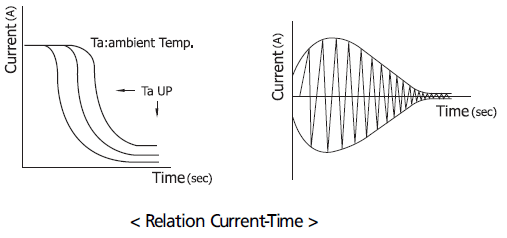
When more than a given voltage is applied to PTC Thermistor, large current flows in the instant of voltage application,
due to low resistance. However, with the lapse of time, resistance value increases and the current decreases by PTC
Thermistor's self-heating function. The insertion of fixed resistance in series or in parallel will change PTC Thermistor's
characteristic.
Products & Applications
1
PTC Thermistor
Heating Element
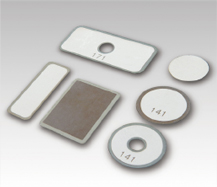
1) Advantages
 Self-Regulating Heating
Self-Regulating Heating High-Reliability
High-Reliability
 Stability
Stability Permanently Available
Permanently Available
2) Applications

2
PTC Thermister
Over Current Protection
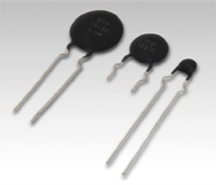
1) Advantages
 Inrush Current Limiter
Inrush Current Limiter Circuit Protection
Circuit Protection
 Inrush Current Limiter
Inrush Current Limiter Circuit Protection
Circuit Protection
2) Applications

3
PTC Theremister
Over Temperature Protection
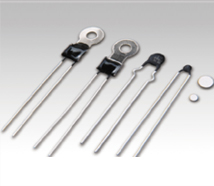
1) Advantages
 Small Size
Small Size Quick Response Time
Quick Response Time
 Accurate and Automatic
Accurate and Automatic Temperature Management
Temperature Management
2) Applications













